Physical Address
304 North Cardinal St.
Dorchester Center, MA 02124
The surgical approaches for treating radiocarpal dislocations and fracture-dislocations are variable, dependent on the specific injury pattern. It is not unusual for these injuries to require multiple surgical approaches to address all the fracture fragments and achieve ligamentous stability. In a series of patients with dorsal articular rim fractures with radiocarpal fracture-dislocation, 7 of 19 patients required both a dorsal and volar incision to address distal articular fractures dorsally and volarly. Some surgeons feel that the volar approach may not be necessary if the injury can be anatomically reduced and the radiocarpal joint stabilized, with primary healing of the ligament.
For a volar approach, we favor an extended carpal tunnel approach. This approach provides for excellent visualization of the volar radiocarpal ligaments for direct suture or suture anchor–augmented repair. The extended carpal approach also allows for direct reduction of palmar lip fractures of the radius and application of appropriate fixation. In these injuries, there is often rupture of the ligaments or traumatic avulsion through bony fragments with a traumatic arthrotomy of the joint capsule; thus the dissection is often completed upon exposing the volar wrist. With this incision, carpal tunnel release can be performed which is particularly advantageous in the event of acute median nerve compression or to mitigate the risk of developing acute carpal tunnel in patients with severe swelling.
An incision is planned just ulnar to the thenar crease, in line with radial aspect of the fourth digit with an ulnar-directed Bruner zigzag incision proximally across the wrist crease ( Fig. 69.1 ). A standard carpal tunnel release is performed distally with the release of the antebrachial fascia proximally. With retraction of the entire contents of the carpal tunnel, there is extensive visualization of the volar wrist capsule and ligamentous structures ( Fig. 69.2 ). From this vantage, the volar radiocarpal ligaments can be assessed and repaired ( Fig. 69.3 ).
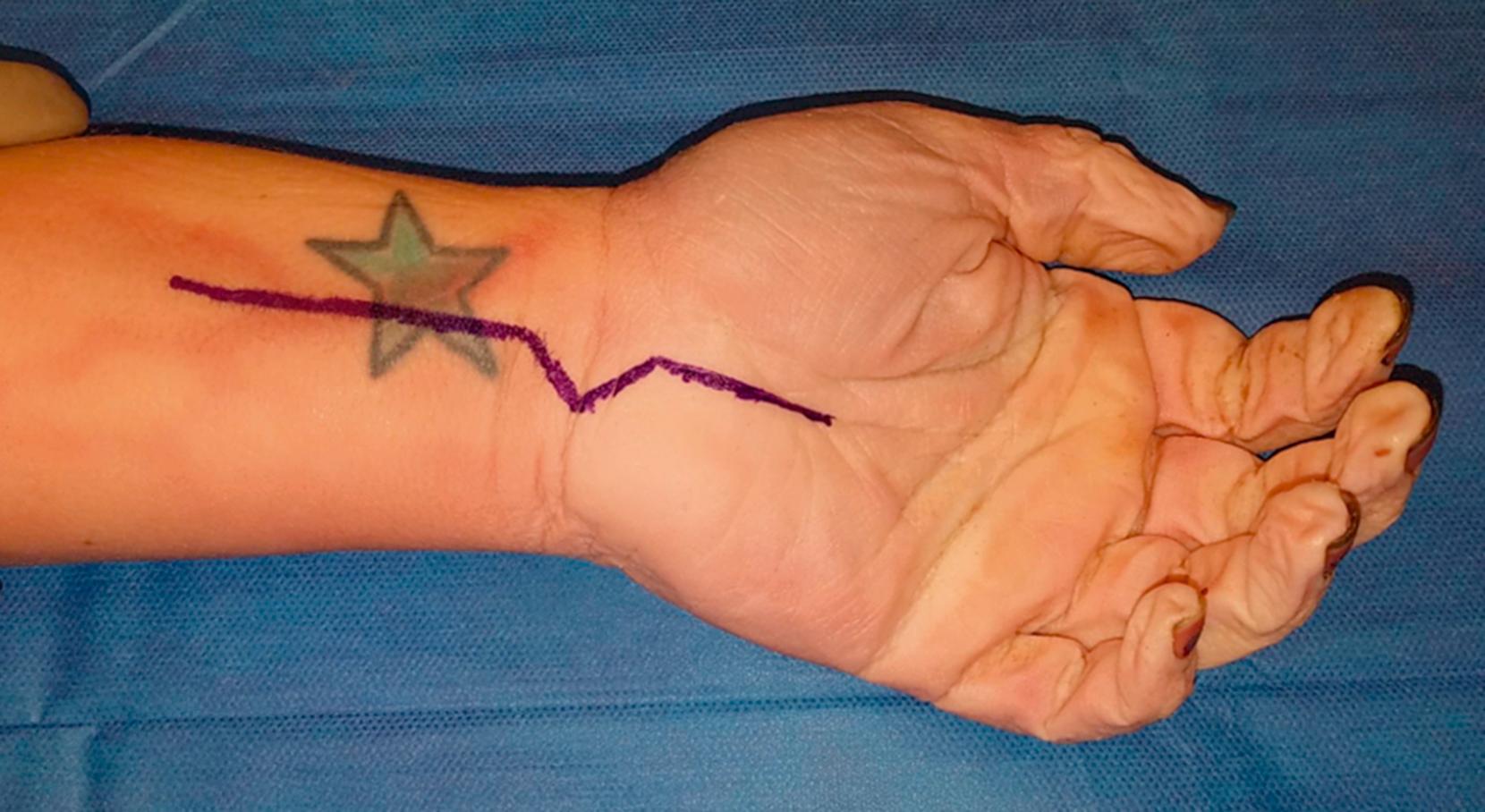
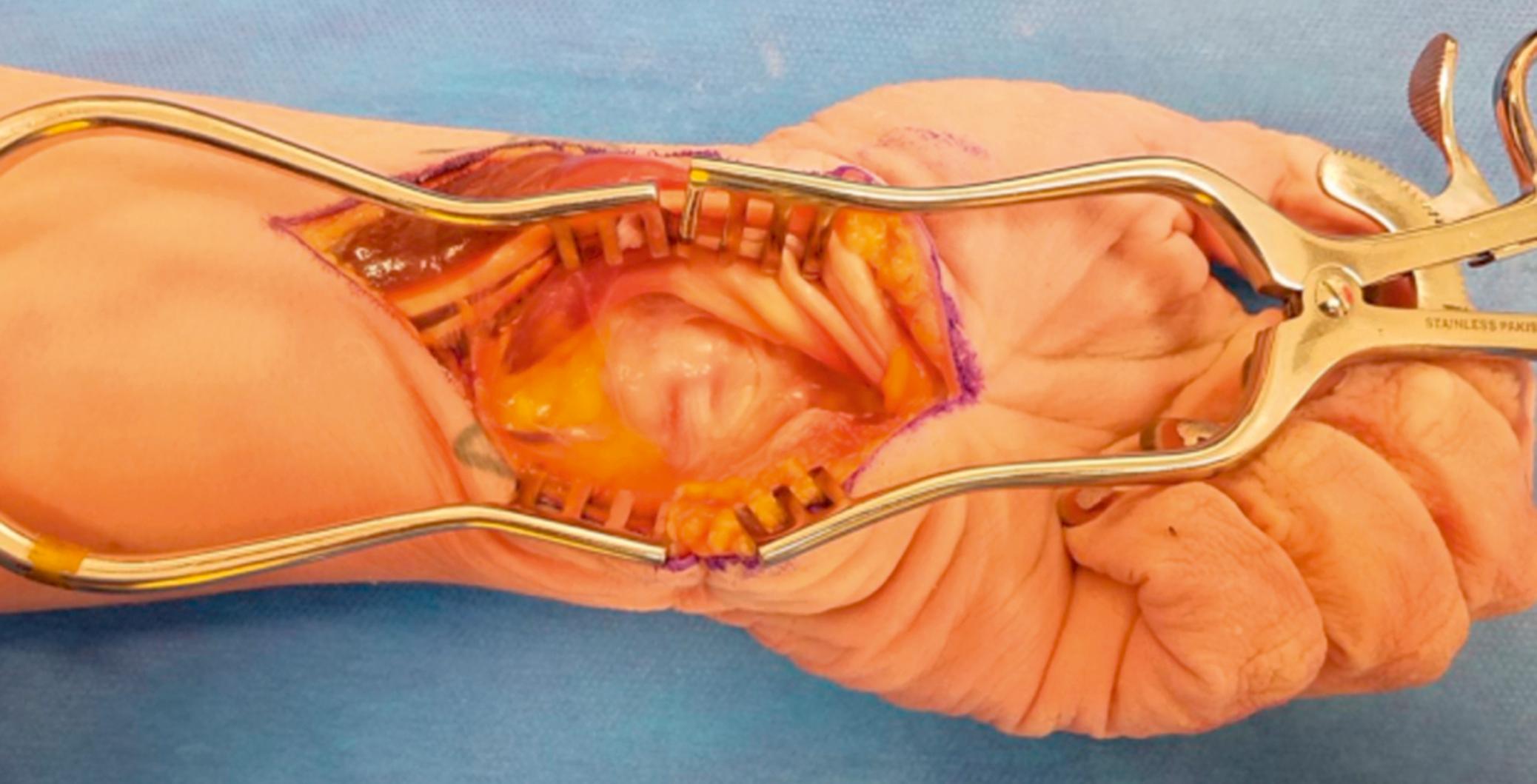
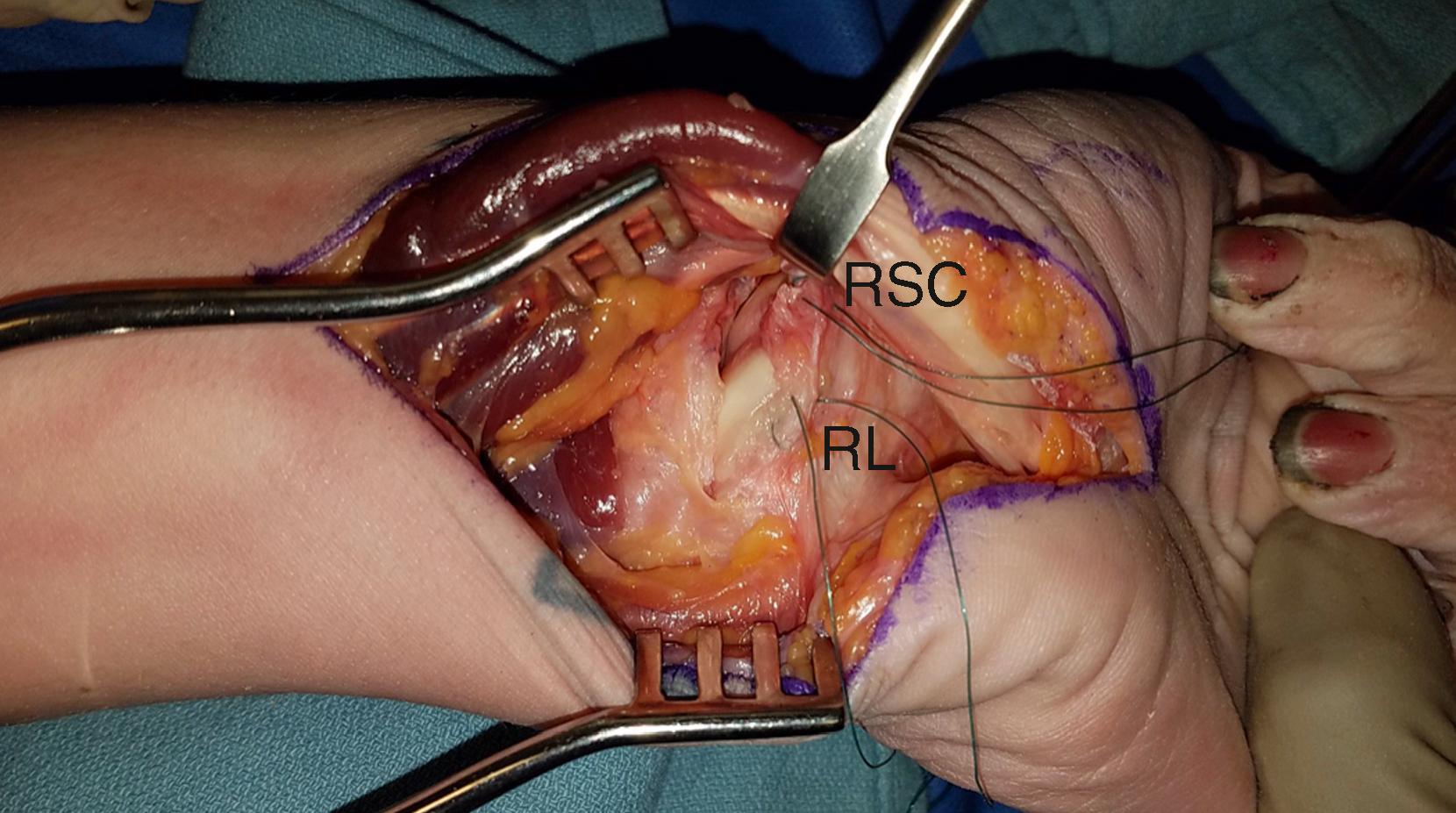
A sample case demonstrates the small, comminuted bony fragments more appropriately described as ligamentous avulsions that require open approach for repair ( Fig. 69.4 ). In this case, a 24-year-old male was involved in a high-energy motor vehicle collision resulting in a Dumontier Type I radiocarpal fracture-dislocation in addition to other carpal and metacarpal injuries. His radiocarpal injury was treated with open repair through a volar extended carpal tunnel approach with the addition of a dorsal spanning plate to offload and protect the radiocarpal joint to allow for ligament healing ( Fig. 69.5 ).
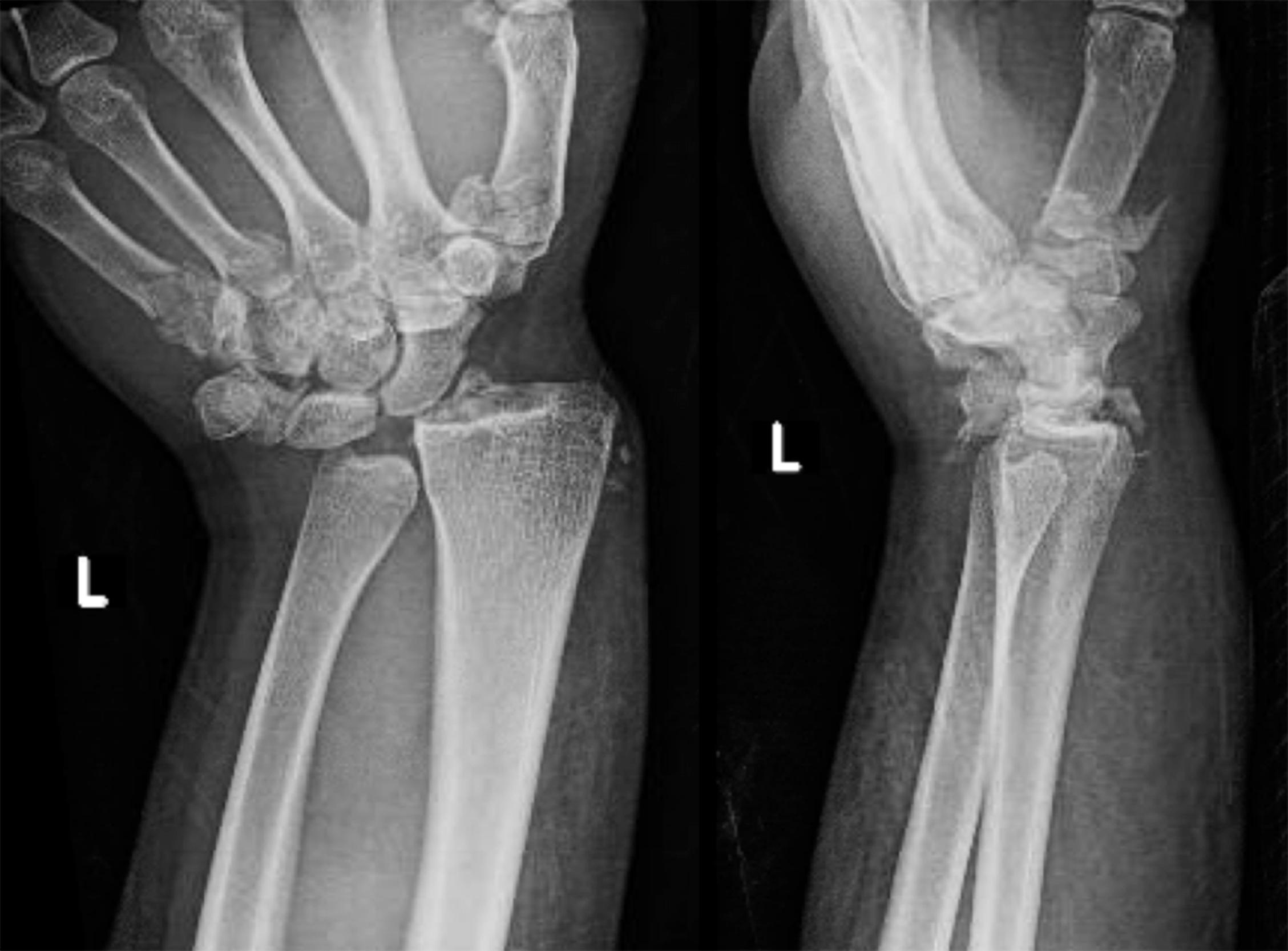
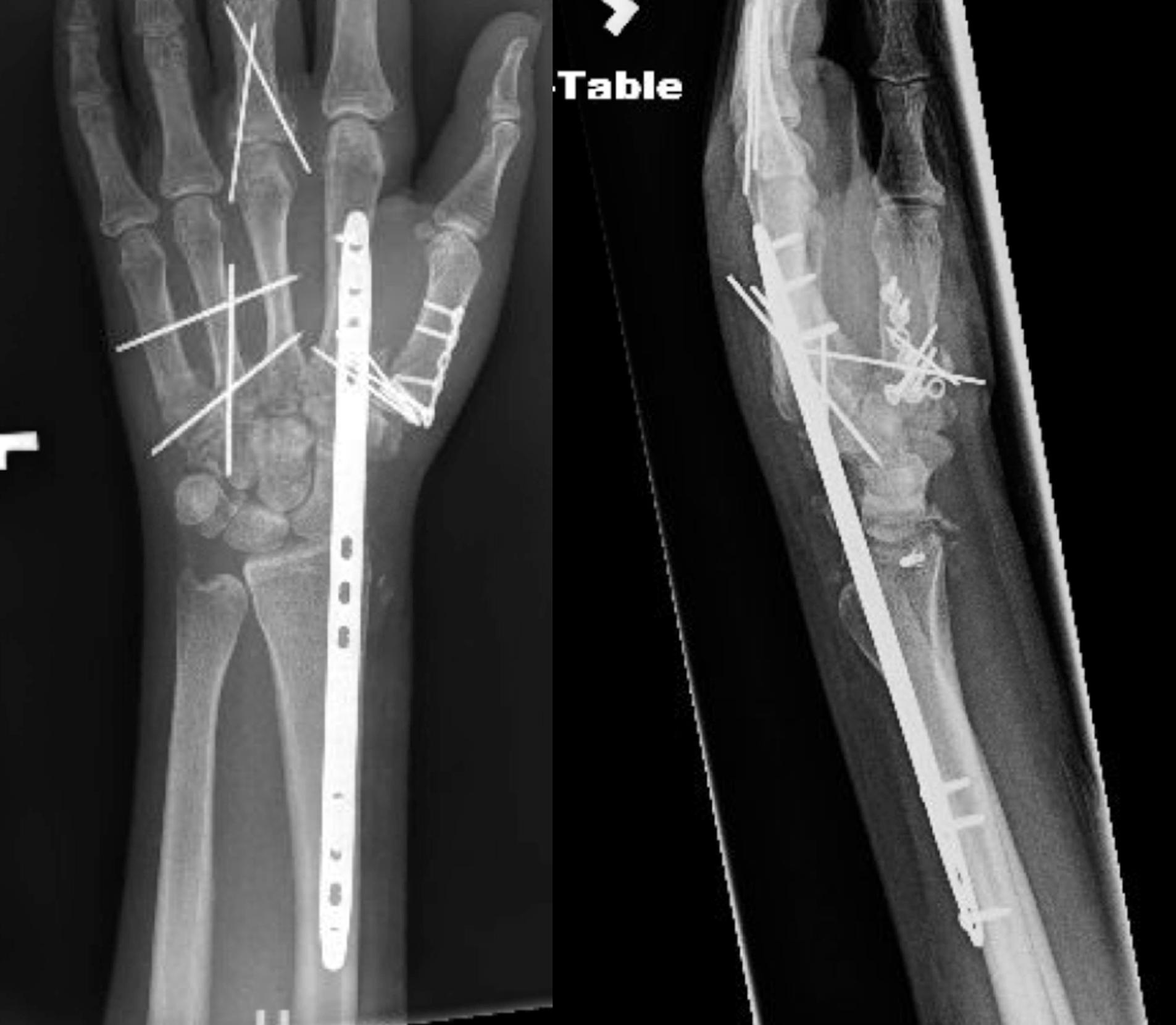
Become a Clinical Tree membership for Full access and enjoy Unlimited articles
If you are a member. Log in here